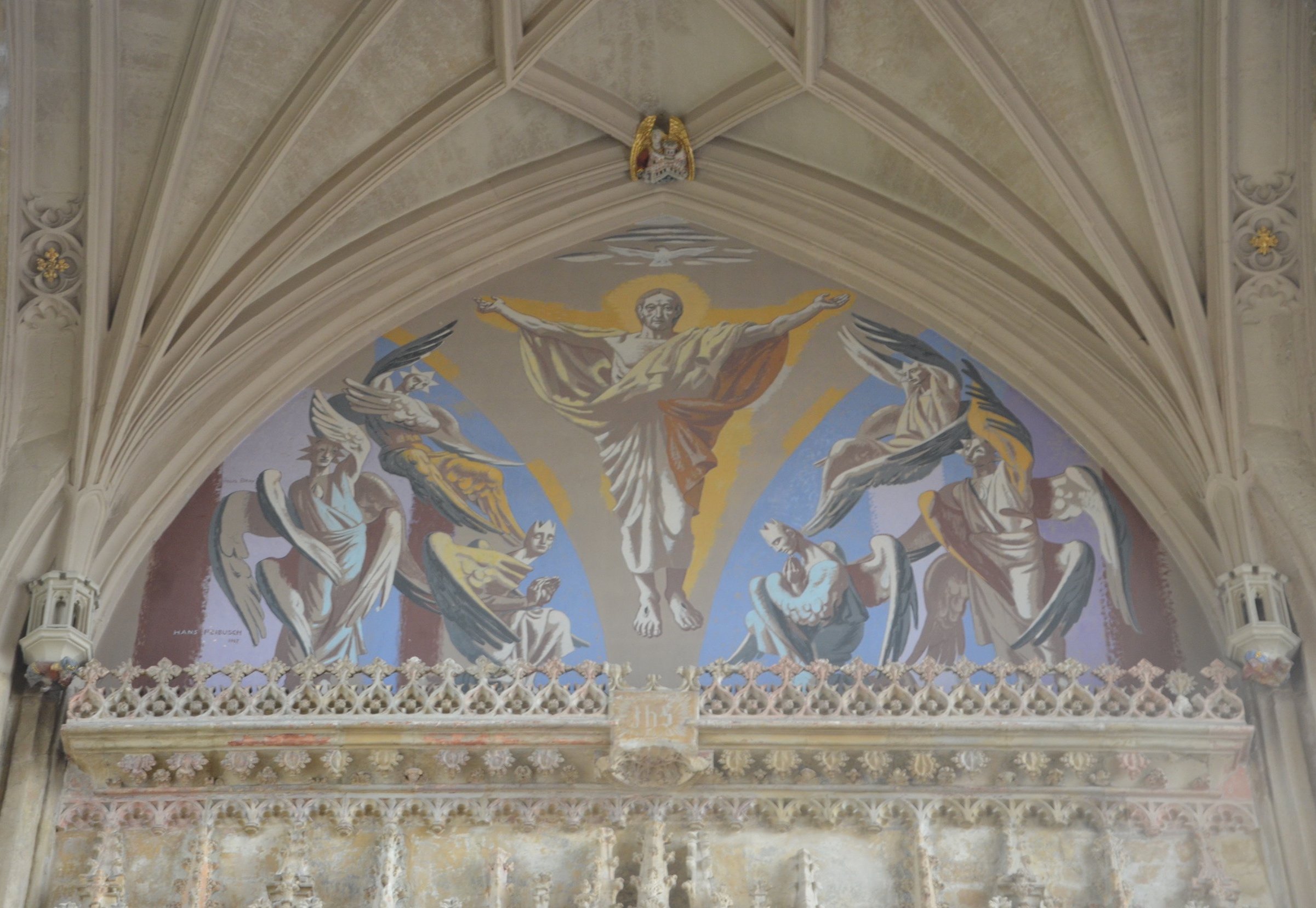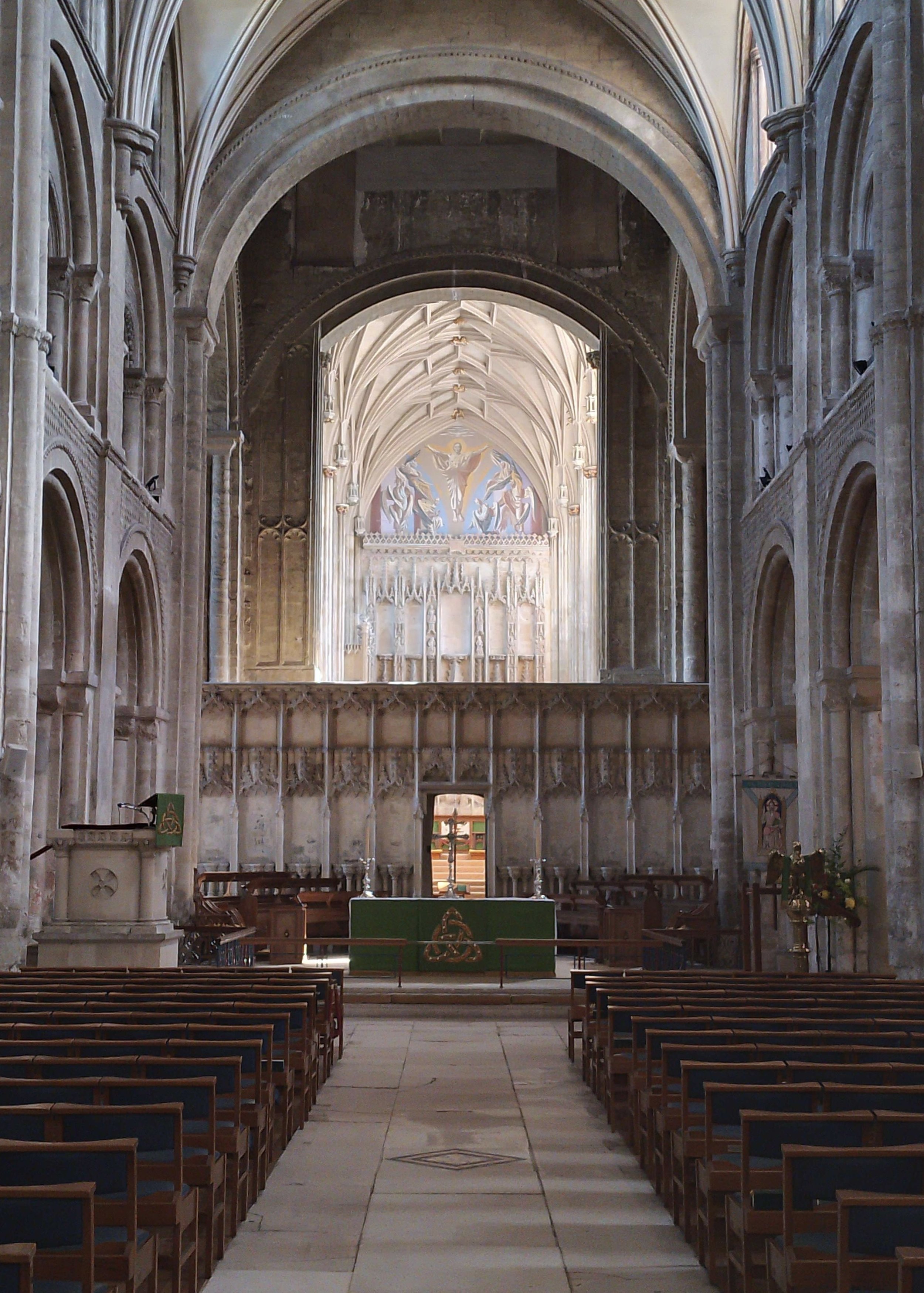Hans Feibusch: Ascension


Title: Ascension
Artist: Hans Feibusch (1898–1998) with Phyllis Bray (1911–1991)
Location: Christchurch Priory (C of E)
Date: 1967
Hans Feibusch, a Jewish artist who fled Germany in 1933, became the most prolific muralist in the history of the Church of England. Through his relationship with George Bell, the Bishop of Chichester, he created murals for many churches, often those built or restored after the war. His murals combine the palettes, techniques and forms of European Modernism – Expressionism and Cubism – with those of the early Italian Renaissance, while speaking to the spiritual concerns of the post-war church. Feibusch saw his work as essentially collaborative – not only with his assistant, Phyllis Bray, and the architect, but also with the worshipping congregation. ‘A work of art in church is there to help the worshipper, to lead their thoughts from the tumultuous outer world towards an inner spiritual one.’ (Hans Feibusch, ‘Mural Painting in Churches’, Studio, 1954)
His Ascension for Christchurch Priory, Dorset, was Feibusch’s last church mural, and demonstrates his skill in integrating art and architecture. The mural appears to grow out of the monumental 14th century reredos depicting the Tree of Jesse, continuing its forms into the vaulted roof. Christ ascends from the centre of the reredos, rising above the tiered scenes of earthly life: Jesse, Solomon, the Magi in adoration. To each side are many-winged angels, some shielding their faces, others kneeling before him, heads bowed or eyes closed. Their faces are strongly modelled and smooth, otherworldly and ageless next to Christ’s lined features. Yet the range of emotions in their attitudes, awe, hope, even curiosity, reaches out to the human viewer below.
Hans Feibusch (1898–1988) was born into a Jewish family in Frankfurt am Main. Studying in Munich, Berlin and Paris, he returned to Frankfurt to set up a studio. He emigrated to the UK in 1933; in 1937 his work was displayed in the National Socialist ‘Degenerate Art’ exhibition. His mural, The Footwashing, at Colliers Wood Methodist Church was noticed by Kenneth Clark, and through this his name was recommended to George Bell, Bishop of Chichester. From 1940 Feibusch received over thirty commissions for church murals in Anglican churches, such as St Mary the Virgin, Welling and St John’s, Waterloo, as well as secular murals in Newport and Dudley. In the 1970s failing eyesight encouraged him to turn to sculpture. Having converted to Christianity in the 1960s, he returned to his Jewish faith in the last decade of his life. In 2018 a campaign saved a significant series of murals based on Pilgrim’s Progress from the crypt of St Elisabeth’s, Eastbourne, which are now in storage, awaiting funding for restoration.
Phyllis Bray (1911–1991) studied at the Slade under Henry Tonks and was elected to the London Group at the age of twenty-two. A landscape painter, illustrator and muralist, she collaborated with Hans Feibusch on his church murals for forty years. She also created murals in her own right, for, among others, the People’s Palace, now owned by Queen Mary University of London, and St Crispin’s, Bermondsey.
Further Information
Medium: paint (probably Stic B or Walpamur)
Permanent display
See Hans Feibusch’s Ascension on the Ecclesiart map here.
Other works in churches by Hans Feibusch: Many, including for Chichester Cathedral; Trinity in Glory (1966), St Alban the Martyr, Holborn; Crucifixion and Adoration of the Shepards (1951), St John the Evangelist, Waterloo; Christ in Majesty (1954), St Mary, Goring-by-Sea; Ascension (1955), St Mary the Virgin, Welling; Temptation of Christ, Wise and Foolish Virgins, Flight of Angels (1956), St Michael and All Angels, Portsmouth; Christ in Glory (1958), St Sidwell, Exeter; Baptism of Christ (1960), Catherine St Baptist Church, Plymouth; also sculptures at Ely Cathedral and St John’s Wood church.
Other works in churches by Phyllis Bray: dome mural, St Crispin’s, Bermondsey.
Other works of modern and contemporary art in Christchurch Priory: Crucifix (1999), Laurence Broderick; windows, Jane Gray; NHS worker gargoyle, Rory Young.
